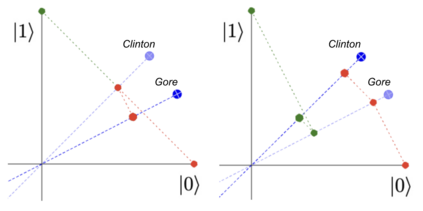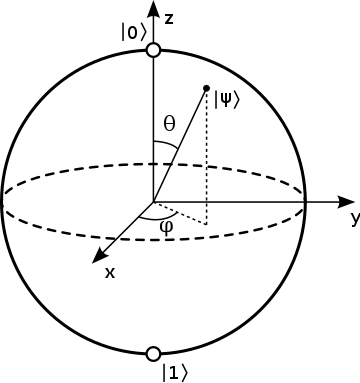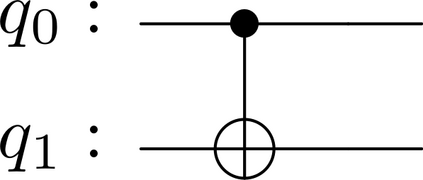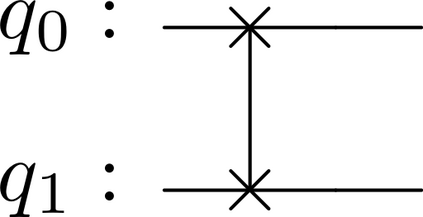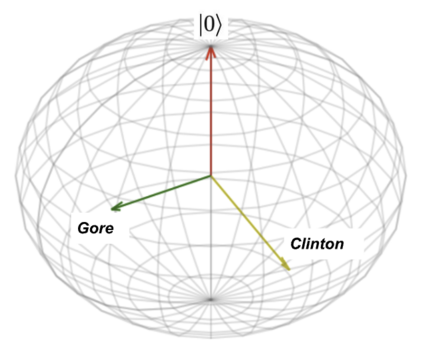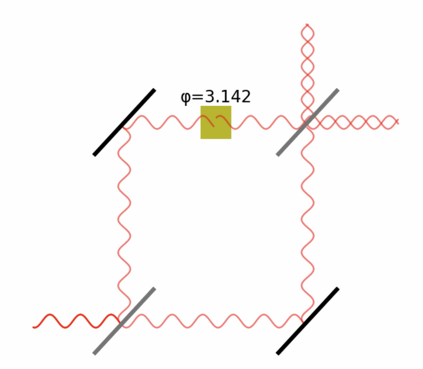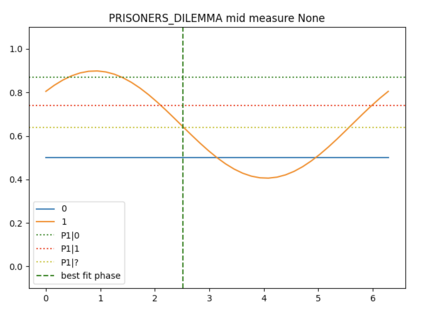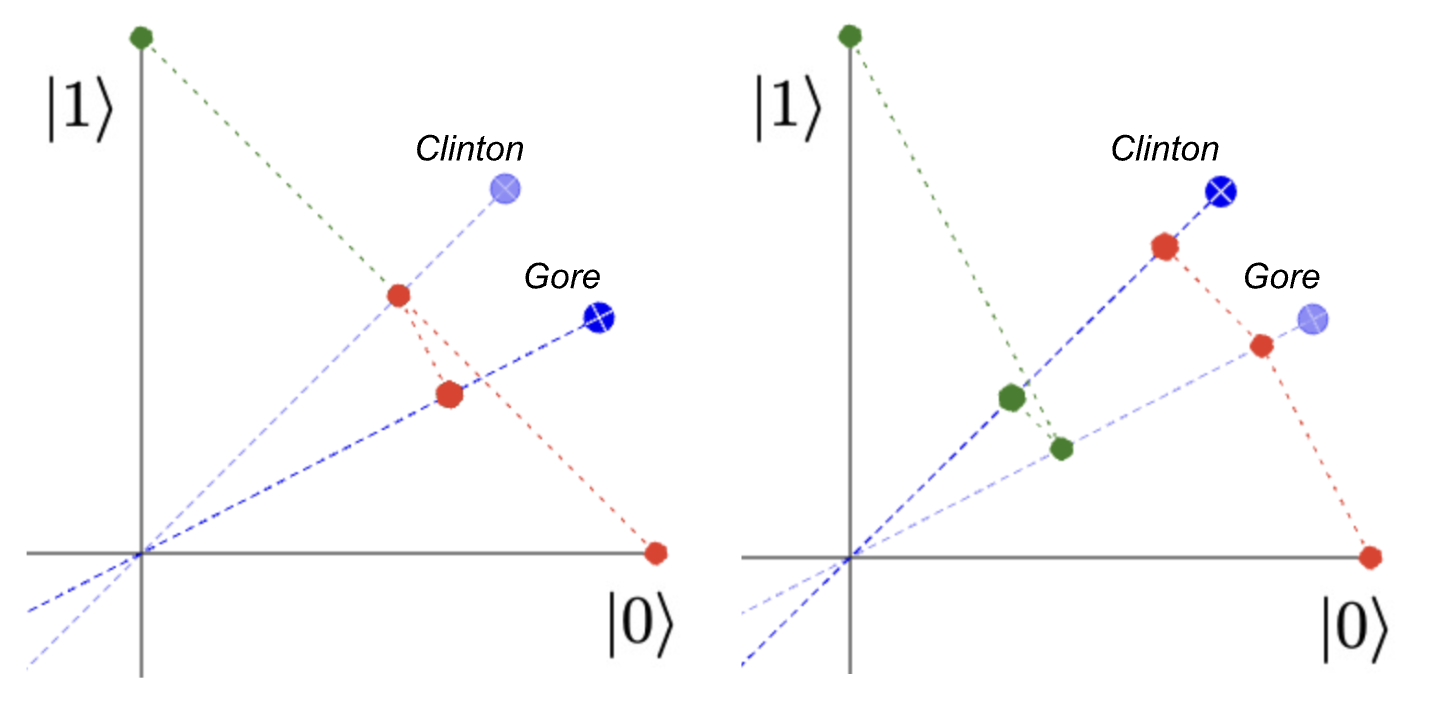This paper demonstrates that some nonclassical models of human decision-making can be run successfully as circuits on quantum computers. Since the 1960s, many observed cognitive behaviors have been shown to violate rules based on classical probability and set theory. For example, the order in which questions are posed affects whether participants answer 'yes' or 'no', so the population that answers `yes' to both questions cannot be modeled as the intersection of two fixed sets. It can however be modeled as a sequence of projections carried out in different orders. This and other examples have been described successfully using quantum probability, which relies on comparing angles between subspaces rather than volumes between subsets. Now in the early 2020s, quantum computers have reached the point where some of these quantum cognitive models can be implemented and investigated on quantum hardware, representing the mental states in qubit registers, and the cognitive operations and decisions using different gates and measurements. This paper develops such quantum circuit representations for quantum cognitive models, focusing particularly on modeling order effects and decision-making under uncertainty. The claim is not that the human brain uses qubits and quantum circuits explicitly (just like the use of Boolean set theory does not require the brain to be using classical bits), but that the mathematics shared between quantum cognition and quantum computing motivates the exploration of quantum computers for cognition modelling. Key quantum properties include superposition, entanglement, and collapse, as these mathematical elements provide a common language between cognitive models, quantum hardware, and circuit implementations.
翻译:本文表明, 人类决策的某些非古典模式可以成功地作为量子计算机的电路运行。 自1960年代以来, 许多观察到的认知行为被证明违反了基于古典概率和设定理论的规则。 例如, 提出问题的顺序影响参与者回答“ 是” 或“ 不 ”, 因此, 回答这两个问题的“ 是” 人口不能以两个固定数据集的交叉方式建模。 但是, 它可以建模成一个在不同顺序下进行的预测序列。 这个和其他语言的例子已经被成功地描述为量子概率, 量子空间之间的角度比较, 而不是子集之间的量子。 现在在2020年代初, 量子计算机已经到达了这样的点, 这些量子认知模型可以执行和调查量子硬件, 代表了昆虫登记册中的精神状态, 以及使用不同门和测量的认知操作和决定。 本文开发了量子认知模型的量子路路路路图, 特别侧重于在不确定情况下的测序效应和决策。 声称, 人类大脑使用量轴和量子电路, 直线,, 直径, 和量流 直径, 直路路,, 直径,, 直径,,,, 直径直径直,,,,, 直, 直, 直, 直, 直, 直, 直, 直, 直, 直, 直, 直, 直, 直, 直, 直,,, 直, 直, 直, 直, 直, 直, 直, 直, 直, 直, 直, 直, 直, 直, 直, 直, 直, 直, 直, 直,, 直, 直, 直, 直, 直, 直,, 直, 直, 直,,, 直,, 直, 直,,,, 直, 直, 直, 直, 直, 直, 直,,,,,, 直, 直, 直, 直, 直, 直, 直, 直, 直, 直, 直, 直</s>

